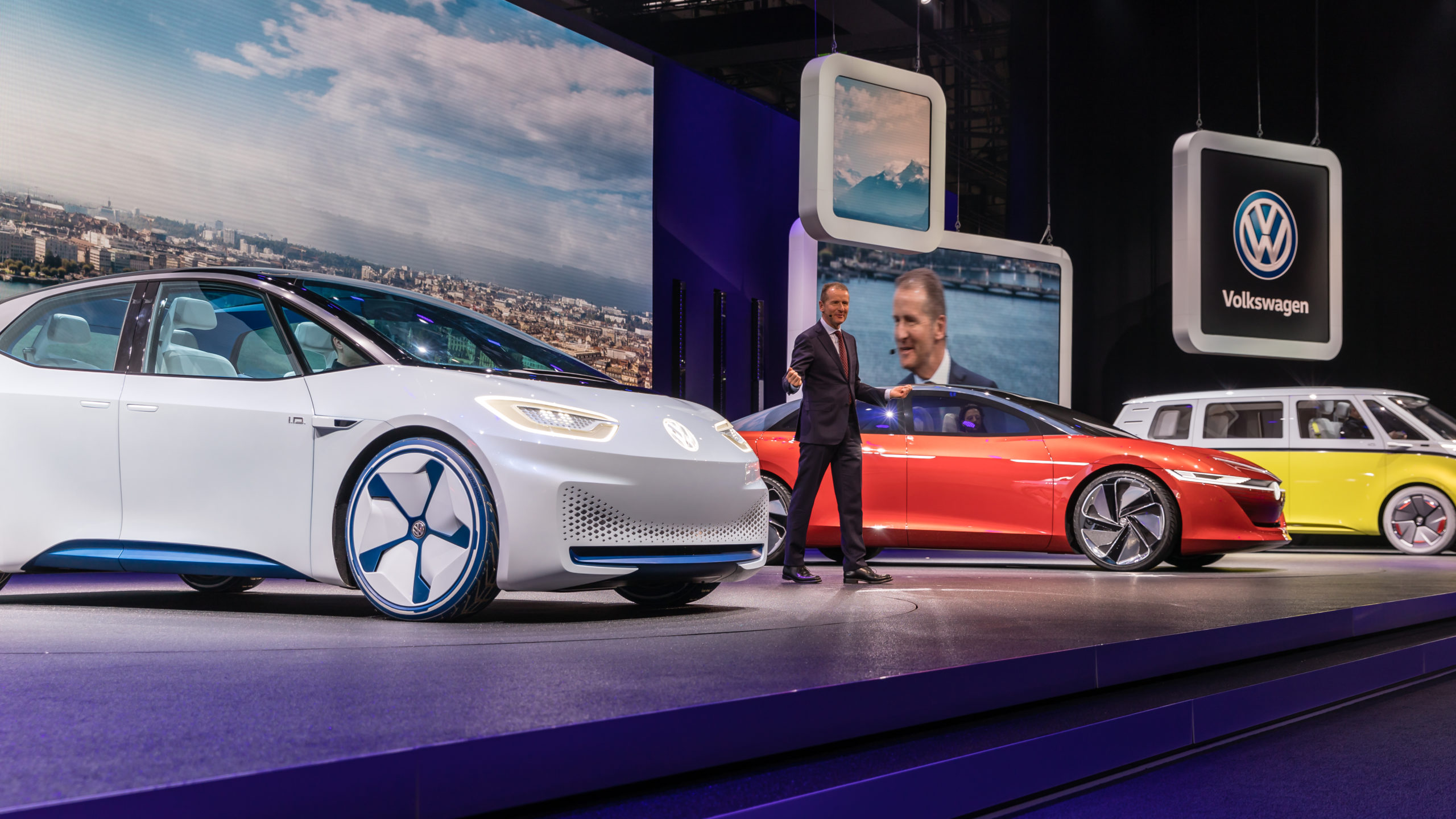In an era saturated with digital demands, the average American consumer is no stranger to the subscription model. From streaming entertainment to weekly meal kits, our lives are increasingly managed by recurring monthly or annual fees. Deloitte’s 2024 Digital Media Trends report even highlights that U.S. consumers spend an average of $48 per month on video-streaming subscriptions alone, with a significant half admitting they “pay too much” for these services. This pervasive, pricey, and often overwhelming landscape has even birthed its own term: subscription fatigue.
Yet, as if this wasn’t enough, a new battleground for subscription dollars is emerging, directly impacting the vehicles we drive. Automakers are now aggressively entering this game, asking owners to pay monthly or annual fees for everything from connected services and convenience features to performance enhancements. What makes this shift particularly contentious is that many of these features were previously standard equipment or options paid for once at the time of purchase. This transformation, driven by increasingly software-defined vehicle (SDV) architectures, promises automakers a steady revenue stream, but it’s running headfirst into a wall of consumer resistance.
This article delves into the intricate web of reasons why American drivers are pushing back against the automotive industry’s pivot to subscription-based features. We’ll explore the underlying causes of consumer frustration, the specific offerings that have sparked outrage, and the fundamental challenges automakers face as they attempt to redefine vehicle ownership in the digital age. Understanding these dynamics is crucial to comprehending the future of our relationship with the cars we drive.

1. **The Looming Cloud of Subscription Fatigue**American consumers are already feeling the pinch of an ever-growing list of monthly payments for various services. The data from Deloitte’s 2024 Digital Media Trends report clearly illustrates this, showing consumers paying a significant amount for video-streaming alone. This widespread fatigue means that adding yet another recurring charge, especially for something as fundamental as a car feature, is a tough sell.
The concept of “subscription fatigue” isn’t just a buzzword; it’s a very real economic and psychological burden for many households. People are already managing multiple accounts, tracking due dates, and constantly evaluating whether each service justifies its cost. Introducing car subscriptions into this already crowded landscape often feels like an unwelcome imposition rather than an added value.
When faced with the prospect of paying for heated seats or remote start on top of existing streaming, gaming, and delivery service subscriptions, many consumers simply reach their breaking point. It’s not necessarily about the individual cost of the car feature, but the cumulative effect of a society increasingly reliant on “renting” access to products and services. This overarching weariness with recurring payments forms a foundational layer of resistance to automotive subscriptions.

2. **The ‘Previously Free’ Outrage: Features Becoming Paid**One of the most significant drivers of consumer backlash is the perception that automakers are now charging for features that were once included in the vehicle’s purchase price or even offered for free. This sentiment strikes at the core of what consumers understand as “ownership” and “value” in a vehicle. When a feature like heated seats, which were once a one-time upgrade, suddenly becomes a monthly subscription, it generates considerable frustration.
BMW, for instance, famously faced “harsh criticism online” and was “roasted by consumers” for attempting to charge a subscription for heated seats. This public outcry eventually led them to drop the charge. Similarly, the company stopped charging $80 a year for access to Apple CarPlay and Android Auto, a feature Apple “gives to automakers for free.” These examples highlight a clear disconnect between automaker strategy and consumer expectations.
Toyota, a mass-market brand, has also drawn fire for transitioning functions like remote start, vehicle status alerts, and unlocking/locking with your phone—previously free—into its “Toyota Remote Connect” app, now costing $8/month or $80/year. This move affects owners of 2018-present models, effectively retroactively charging for functionality. Such changes are not just about money; they represent a perceived betrayal of value that was once part of the car’s initial purchase agreement.

3. **Perceived Lack of Value and Utility**Beyond the anger over features shifting from included to subscription-based, consumers often question the actual value and utility of these new paid services. If a feature isn’t used frequently, paying a recurring fee for it feels wasteful. Fanni Li, associate manager connected car and vehicle experience at S&P Global, pointed out that “frequency of use and the cost of a feature as part of a new purchase are important factors.”
Consider the example of heated seats. If a car owner lives in a warm climate, paying a subscription for heated seats, even if available, makes little sense. S&P Global found that “fewer than 30 percent of respondents are willing to pay for heated seats or a heated steering wheel though a monthly subscription.” This statistic underscores a practical consumer mindset: why pay for something you don’t need or rarely use?
Conversely, some features, like advanced driver assist systems, have large upfront costs when purchased with the vehicle. A subscription could potentially “stretch the cost over time,” appealing to those who might “need it for a weekend, or… for a trip, but… don’t use it every day,” as Kevin Mixer from Gartner noted. However, the core issue remains whether the perceived benefit and frequency of use align with the ongoing cost, a connection automakers often fail to make in consumers’ minds.
Read more about: Decoding the Surge: The 12 Most Targeted Vehicles in America and the States Where Car Theft Is Soaring
4. **Hardware vs. Software Divide: Buyer Reluctance for Physical Components**Another critical distinction influencing consumer acceptance is whether the subscription relates to software-driven services or physical hardware already present in the vehicle. Autolist’s survey revealed that “shoppers are much more likely to accept a monthly fee for entertainment features or software updates than for anything tied to a physical capability of a new car.” This preference highlights a fundamental difference in how consumers value different types of features.
The data is quite stark: “70 percent of buyers want to pay up-front for hardware like heated seats or adaptive headlights, and 69 percent want performance features to be purchased along with the car rather than accessed on a monthly or yearly fee.” This strongly suggests that consumers feel a sense of ownership over the physical components of their vehicle. Once the hardware is installed in the car, paying an ongoing fee to activate it feels exploitative rather than value-added.
Volvo CTO Anders Bell articulated this sentiment clearly: “I would have a hard time paying to unlock hardware that I know is [already installed] in the car.” This perspective resonates widely, implying that while software updates or new digital services might be acceptable for subscriptions, the physical capabilities of a car, for which the hardware has already been paid for as part of the vehicle’s initial price, should not be subject to ongoing fees. The distinction is crucial for automakers hoping to navigate this resistance effectively.

5. **Dealership Activation Failures and Poor Handoffs**Even when automakers design subscription services with potential appeal, the execution at the dealership level often falls short, leading to missed opportunities and consumer disengagement. Andrew Hart, CEO of SBD Automotive, observed that in “many cases half of cars leave the dealership without the connection for the free service being activated.” This suggests a significant breakdown in the initial onboarding process for these services.
Hart further explained that salespeople are “still more concerned about selling cars, not subscriptions.” This misalignment of incentives means that the crucial first step of introducing customers to subscription benefits and activating trial periods is often overlooked. If customers don’t even get a chance to experience the value of a service during a free trial, their likelihood of subscribing later is significantly diminished.
GM’s OnStar, a long-standing telematic service, was successful partly because salespeople were “incentivized to sign customers up for OnStar subscriptions” and credit card information was collected to ensure rollover after free trials. The current approach to newer subscription services seems to lack this strategic integration, creating a disconnect that prevents consumers from ever forming a bond with these features. This operational hurdle is a major impediment to widespread adoption and reflects a lack of focus on the post-sale customer journey.

6. **Automakers’ Identity Crisis: Tech Company or Car Maker?**For a decade or so, many automakers have declared their intention to operate more like tech companies, aiming to transition from simply “moving metal to selling software and subscriptions.” However, this transition has proven to be a significant struggle. The underlying operational software itself presents challenges, as evidenced by GM’s recent issues with its all-electric, software-heavy vehicles.
Fanni Li of S&P Global noted that “as vehicles become more software-centric, automakers see opportunities to monetize features that can be activated or enhanced via software updates.” While the aspiration is clear—to generate steady revenue streams like tech giants—the practical implementation remains elusive. The shift requires not only technical prowess but also a fundamental change in organizational structure and marketing capabilities that many traditional car companies are still developing.
This “build-it-and-they-will-come mentality,” where automakers develop over-the-air update capabilities, doesn’t automatically guarantee success, according to Andrew Hart. He suggests that while they now have the technology to “connect the dots,” they still struggle to identify “what they should do in terms of features and pricing from a consumer’s point of view.” This fundamental challenge in adapting their core identity and business model contributes significantly to consumer skepticism.

7. **The Gap Between Technology-Driven and Outcome-Driven Offerings**Perhaps one of the most critical reasons for consumer resistance is that many automakers are primarily “technology-driven as opposed to outcome-driven” when developing and introducing subscriptions. This means they focus on what their new software can *do* rather than how it genuinely *helps* the consumer. As Andrew Hart puts it, “I think consumers are much more practical than OEMs realize and first ask, ‘How does this help me?’”
The push for features like “car wash modes,” which automate vehicle preparation for a car wash, exemplifies this gap. While technologically advanced, J.D. Power found that this mode is “often buried within the infotainment system, and 38 percent of owners say they need better instructions on how to use it.” This indicates that a feature, despite its technical sophistication, fails to deliver a clear, accessible, and intuitive outcome for the user.
Automakers, in their zeal to demonstrate technological advancement and monetize new capabilities, sometimes lose sight of the end-user experience. They develop the capability to update vehicle software over the air to enable new services and features, but as Hart notes, “this doesn’t guarantee success.” Without a clear, tangible benefit that resonates with a consumer’s daily life, these subscriptions often fall flat, contributing to the overall reluctance to pay for them.
Read more about: The Shifting Landscape of Mobility: How Car Subscription Services Are Reshaping Driving for Americans
8. **The Nuance of Consumer Pushback: Reality vs. Perception**While initial outcry against subscription features often grabs headlines, a deeper look reveals a more nuanced consumer sentiment than simple outright rejection. Automakers have faced “harsh criticism online” for specific offerings, leading to high-profile reversals. Yet, market research suggests the “perceived outrage doesn’t match reality” for the general consumer, indicating potential readiness for subscription models under the right conditions.
BMW’s retreat from charging for heated seats and Apple CarPlay exemplifies consumer pushback forcing a change in strategy. The company was “roasted by consumers” for these moves, proving public opinion can powerfully shape automakers’ pursuit of subscription revenue. Such instances highlight specific boundaries consumers are unwilling to cross.
However, S&P Global data offers a silver lining, finding “customers are open to subscription features and services if it allows them to tailor their vehicle to their needs and preferences and opt in or opt out of certain features.” This crucial insight points to flexibility and personalization as key to overcoming resistance. It suggests the issue isn’t the subscription model itself, but its implementation and the perceived value.
Fanni Li of S&P Global noted that “frequency of use and the cost of a feature as part of a new purchase are important factors.” If a feature is rarely used, like heated seats in warm climates, consumers see little value in a recurring charge. This underlines the need for automakers to be strategic and sensitive to customer needs and usage patterns in their offerings.

9. **The Data Goldmine and the Privacy Minefield**Beyond immediate revenue, a significant incentive for automakers embracing connectivity and subscriptions lies in the wealth of data they can collect. Even if owners don’t renew subscriptions, car companies can “reap rewards in the form of data and user feedback that can aid in future product development and personalized marketing,” enhancing the overall digital experience. This deep dive into user behavior provides invaluable optimization insights.
Kevin Mixer from Gartner explained, “The goal for automakers is having insight on which features are being used and what it is that the customers are really experiencing.” This granular data enables services to be “tailored around how someone uses the products and to make sure it’s used more efficiently.” Such insights are crucial for optimizing offerings and fostering stronger customer relationships, much like tech giants have mastered.
This data-driven approach translates into improved marketing capabilities. Understanding preferences and vehicle usage allows for “targeted or personalized marketing” inside the vehicle. The accuracy of these services and offers relies on foundational insight into vehicle use and customer value, even if not always directly quantifiable.
However, increased connectivity and data collection present substantial privacy and security concerns. Li stressed that “OEMs must ensure compliance with all relevant regulations and be transparent about data collection practices,” deeming “Protecting consumer and vehicle data is paramount to maintaining trust.” This trust is fragile, easily shattered by data missteps.
Indeed, some automakers have fallen short. The New York Times exposed how automakers work with data brokers selling driver data to insurance companies. Worse, the Mozilla Foundation’s report “It’s Official: Cars Are the Worst Product Category We Have Ever Reviewed” condemned automakers as “aggressive collectors of personal data.” Jen Caltrider of Mozilla noted, “Every one of the 25 car brands across 15 car companies earned our Privacy Not Included warning label,” highlighting the urgent need for robust privacy safeguards.
Read more about: Rethink Your Shares: 14 Unsettling Facts About Social Media Privacy in the Digital Age

10. **Demographics and Dollars: Who’s Willing to Subscribe?**Understanding consumer acceptance of car subscriptions necessitates examining demographic differences, as not all drivers react similarly. An Autolist survey found “69 percent of respondents said they would not pay into recurring fees,” indicating strong general aversion, even if only 11% had “absolutely no interest.”
Intriguingly, younger buyers are “more likely to be unbothered by subscription services.” Gen Z shoppers, raised in a culture where “you subscribe to everything,” are more tolerant of these payments than older generations. Autolist CEO Corey Lydstone explains, “the concept of paying a monthly fee for a feature on a car is a lot less foreign to them.”
Conversely, “subscription tolerance decreases as age increases,” reflecting ingrained expectations of traditional vehicle ownership. Older generations, accustomed to one-time payments for car features, view subscriptions as an unwelcome shift, contrasting sharply with the digital native mindset.
Perhaps Autolist’s most surprising finding was the inverse relationship between income and subscription willingness among those making over $30,000. While one might expect wealthier buyers to be less bothered, “83 percent said they wouldn’t be willing to subscribe” in households making over $150,000, compared to 57% in lower-income homes.
Autolist suggests that while initial savings from low monthly fees appeal to those who can’t afford upfront options, high-income earners are often put off. Their reluctance might stem from a desire for full ownership, perceived poor value, or concerns about future trade-in value. Automakers risk alienating affluent customers by pushing subscriptions without a clear, compelling value.

11. **The Hit Features: What Consumers Actually Value**Despite resistance, some subscription features resonate with consumers when value and utility are clear. The Smartcar report indicates that “Most valued are emergency assistance, vehicle maintenance, and navigation,” directly addressing core needs for safety, longevity, and convenience.
S&P Global’s research reinforces this, showing high satisfaction for safety-oriented services. “Automatic high-beams and dashcams earned the highest satisfaction rate (89 percent),” alongside driver assist and connected navigation as “most popular subscription features.” These often come with “large upfront costs,” making subscriptions appealing to “stretch the cost over time” for intermittent use, as Gartner’s Kevin Mixer noted.
New AI-based technologies also show promise. J.D. Power found “smart climate control” to be a clear success, improving comfort and efficiency, and notably reducing “6.3 fewer problems per 100 vehicles.” These systems also provide a workaround for touchscreen-only climate controls, boosting “vehicle quality scores and customer satisfaction overall.”
Further successes include “smart ignition and driver preference modes.” Blind spot cameras are “one of the most appreciated technologies,” with “93 percent of drivers saying they use them regularly and 74 percent wanting the feature in their next vehicle.” Their ability to make models “sell faster” underscores their high perceived value.
Finally, in-vehicle shopping and payment systems garner interest from “62 percent of owners.” While past iterations were clunky, the next generation could succeed with “simple, quick purchases tied directly to the driving experience,” like paying for fuel, tolls, or parking. This suggests convenience-driven, transactional subscriptions, if well-executed, have a viable niche.
Read more about: Is the 2025 Acura RDX the Smart Family SUV Choice? An In-Depth Consumer Reports Evaluation.

12. **The Misses: Features That Fail to Connect**While some features succeed, many others fail to connect, highlighting a crucial disconnect between automaker ambition and user experience. J.D. Power’s research found that “car wash modes,” despite prevalence, “have lots of room for improvement.” The issue lies in implementation; they’re “often buried within the infotainment system, and 38 percent of owners say they need better instructions.” This reflects a failure in intuitive design and user education.
“Recognition technologies” are even more problematic, posting the “highest problem rates.” Features like “biometric authentication alone averaged more than 29 issues per 100 vehicles,” with “touchless or hidden controls and direct driver monitoring each saw more than 19.” These create significant friction and dissatisfaction, becoming sources of frustration rather than utility.
The Smartcar report also reveals features consumers aren’t prioritizing. Despite automaker pushes, “virtual car keys” “ranked last” in desired features. This suggests that some innovations, however technically impressive, don’t align with a perceived need or offer enough upgrade to justify subscription or upfront inclusion.
Kathleen Rizk of J.D. Power summarized the core issue: “Smart technologies appear to not only anticipate the driver’s needs but also reduce the cognitive workload and some of the difficulties that drivers face with digital systems.” Features that miss the mark often fail on these principles. “Ultimately, what matters most to vehicle owners… is how useful the technology is and whether it enhances their driving experience.” If a feature complicates life or lacks tangible benefit, it struggles.
Read more about: Remember the ’80s? These 14 Actresses Were the Absolute Queens of Beauty and the Silver Screen!

13. **Leveraging Tech Partnerships and the Pursuit of Control**In their pursuit of tech company status, automakers increasingly recognize the need for collaboration. The complexity of software-defined vehicles has led many to form “partnerships with companies like Google with its Android Automotive OS,” as Fanni Li noted. These collaborations allow OEMs to leverage tech giants’ expertise, offering “familiar and user-friendly interfaces” while focusing on vehicle-specific integrations.
This strategic pivot also reflects a desire for greater control over the in-car digital experience. Several automakers have “ditched Apple CarPlay in favor of a Google built-in approach.” This enables car companies to “develop their own apps in addition to offering familiar Google products,” aiming to “take control of the overall experience,” as Kevin Mixer from Gartner highlighted, aligning it “much more to the digital experiences that all of us are looking for.”
While the technology for “connect the dots” into consumer-centric features and pricing is available via over-the-air updates and powerful OS, success is not guaranteed. Andrew Hart of SBD Automotive warns this “build-it-and-they-will-come mentality” doesn’t ensure adoption. The challenge remains for automakers to shift from being merely “technology-driven” to genuinely “outcome-driven.”
Ultimately, these partnerships bridge automakers’ traditional manufacturing with digital demands. By integrating sophisticated software platforms, they aim for a cohesive in-vehicle digital ecosystem. Success hinges on delivering genuinely useful and desired features, avoiding technology for technology’s sake.
Read more about: The 15 Gravest Financial Pitfalls for Investors and Brands Navigating the Influencer Economy

14. **The Crucial Role of Free Trials and Consumer Engagement**Amidst subscription debates, one clear path to acceptance is the free trial. Research shows that allowing consumers to experience connected services firsthand significantly improves subscription likelihood. S&P Global’s survey found “45 percent of respondents that had services activated at the dealership as part of a free trial period improved the odds of continuing as subscribers.”
Yanina Mills of S&P Global Mobility confirmed, “if consumers get a taste of some of these connected services, they’re more likely to pay for them.” Experiential learning helps drivers understand tangible benefits, integrating features into daily routines and transforming a perceived cost into valued utility. The survey also found “72 percent of consumers would purchase a subscription at the end of their trial period and 86 percent would renew their paid subscription when it ends.”
These numbers highlight the critical role of effective onboarding and seamless introduction to features, areas where dealerships often fall short. When customers are properly guided through a valuable free trial, the barrier to recurring payment drops, shifting perception from an unwanted extra to an indispensable part of their vehicle’s functionality.
For automakers, this means prioritizing educating consumers about new features and ensuring free trials are not only activated but also provide intuitive, valuable experiences. It’s about letting the product prove its worth in the driver’s context, converting skeptics into loyal subscribers and navigating the software-centric future with greater success.
Read more about: The Remarkable Ascent: How Hyundai and Kia Engineered a Decade of Soaring Reliability
The journey into the subscription-based automotive future is clearly fraught with challenges, yet it’s also brimming with opportunities. While the road ahead will demand a delicate balance of innovation, consumer understanding, and transparent communication, the ultimate success of this model hinges on automakers truly listening to what drivers value. It’s not about imposing an endless stream of digital demands, but about intelligently integrating technology that genuinely enhances safety, convenience, and the overall driving experience, all while respecting privacy and offering flexible choices. The industry is at a pivotal juncture, where the decisions made today will define not just how we interact with our cars tomorrow, but fundamentally reshape the very concept of vehicle ownership in the digital age.






